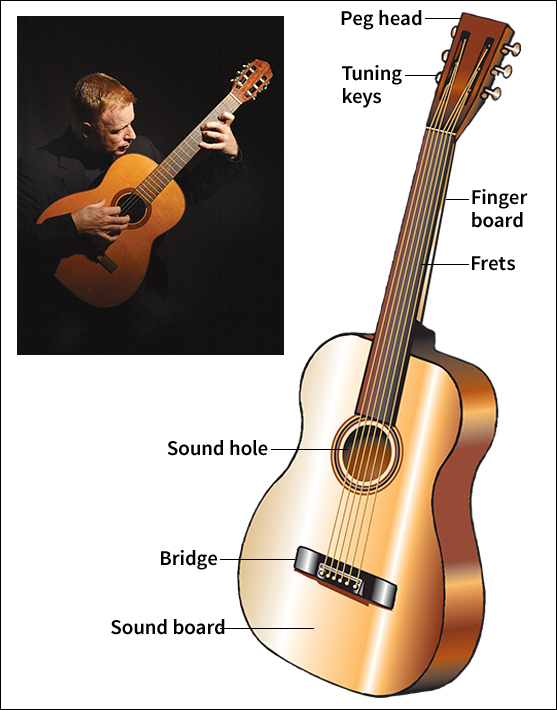Guitar is a popular stringed instrument. A guitar can be used to accompany singers, as a solo instrument, or as part of a band or orchestra. Guitarists can play chords by strumming the strings, or they can play one note at a time by plucking a single string.

For centuries, musicians have played acoustical guitars, which produce sound from the vibrations of the strings. In the 1930’s, electric guitars began to be produced commercially. An electric guitar has an electromagnetic device that picks up the string vibrations and translates them into electrical impulses. An amplifier modifies the impulses. Loudspeakers change impulses back into sound. An electric guitar produces a greater range of sounds than an acoustical guitar.
Loading the player...Guitar manufacturing
Most guitars are made of light wood. They have curved sides and a flat or arched top and back. Guitar strings are made of bronze, nylon, or steel. Most guitars have 6 strings, but some have 4 or 12. The strings are fastened to the bridge, a small piece of wood on top of the instrument. They extend along the finger board and are tied to tuning keys at the head. Narrow metal strips called frets lie on the finger board below the strings. Each fret marks the position of a specific tone. Guitarists press the strings against the frets with the fingers of one hand. They strum or pluck the strings with the other hand or with a plectrum, which guitarists sometimes call a pick.
Historians believe guitarlike instruments were known in ancient Egypt. The Moors, who invaded Spain in A.D. 711, are credited for bringing the guitar from northern Africa to Europe. Antonio de Torres Jurado, a Spanish guitar maker, developed the modern guitar in the late 1800’s. Francisco Tarrega, a Spanish guitarist and composer, originated modern guitar-playing methods at about that time.
